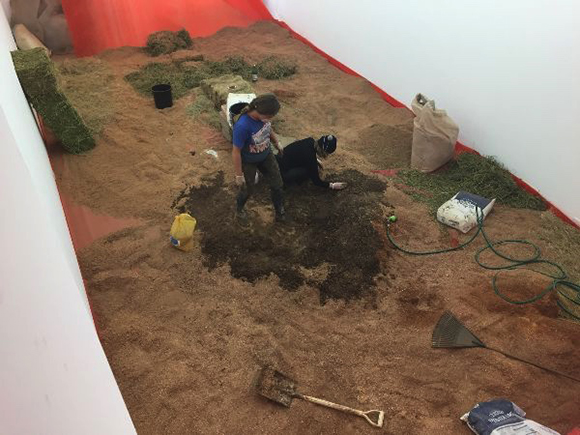
Isadora Vaughan's solo exhibition 'Bilirubin Bezoar' opens at Gertrude Glasshouse this evening.
The title of Vaughan’s presentation co-joins the names of a chemical compound formed by the breakdown of dead blood cells in the body, inherent in the yellow colourisation of bruises (bilirubin) – and a small stony concretion formed in the stomachs of certain animals, and historically used as an antidote to particular poisons (bezoar). The exhibition extends Vaughan’s interest in expanded material experimentation and elaborating a visceral interpretation of anatomical surface, composition and transformation. In this installation, the artist blankets the surface of the floor to create an environment that forms a skin, upon which audiences must navigate a pathway through. Appearing as an environment akin to a forest floor, yet one that also connotes an infestation or infection of a bodily surface, the installation takes form like an alchemist’s manufacture of a new form of anatomy. Departing purposefully from the physical representation of the human form, Vaughan instead presents a setting of unnerving viscosity, metamorphosis and decay that suggests a conduit between and a collapsing of the body and the environment.
Current until 22 June.